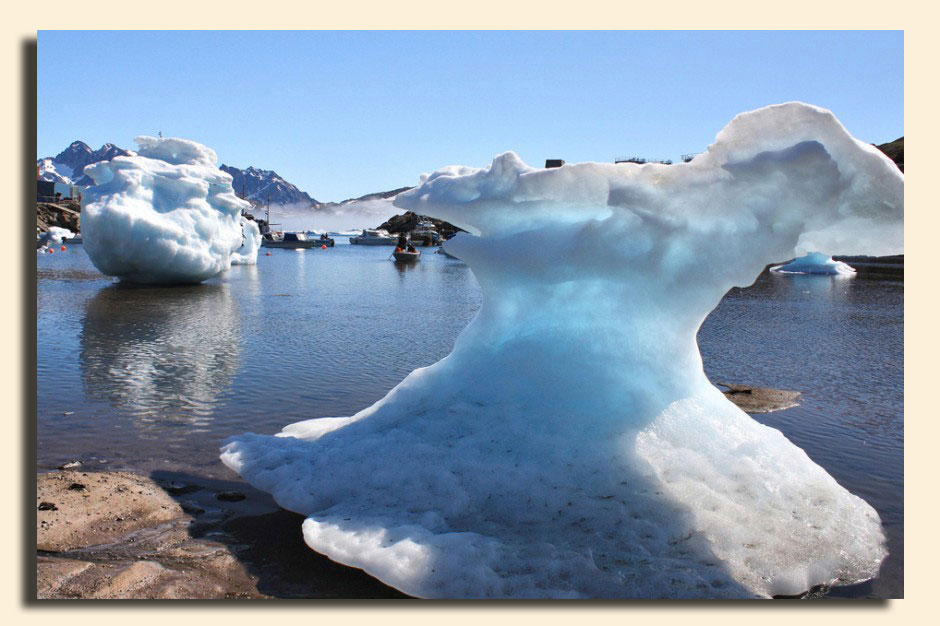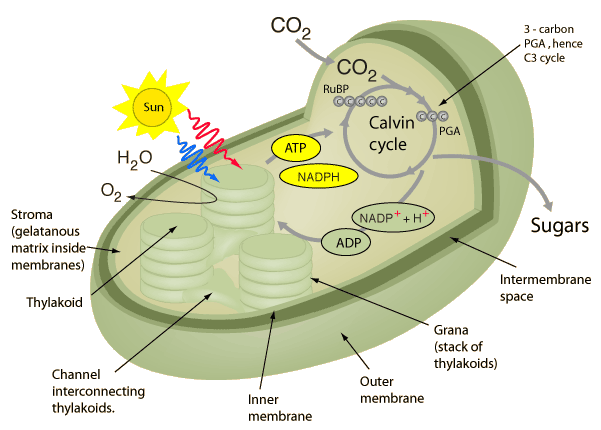SCIENCE PASSAGES

Greenland is losing the battle against rising air and ocean temperatures, a new study finds. The last bulwark to fall is the northeast corner of the Greenland Ice Sheet, which started shrinking rapidly in 2003, according to a new study. “My guess is this is a new record for Greenland,”
said lead study author Shfaqat Abbas Khan, a climate scientist at the National Space Institute at the Technical University of Denmark. “This was very surprising, because we don’t expect huge ice loss in northeast Greenland.” The northeast Greenland ice sheet lost more than 10 billion
10
tons of ice per year since 2003, according to the study. Once thought immune to global warming’s effects, melting in northeast Greenland could significantly boost Greenland’s contribution sea level rise.Khan and his co-authors found that northeast Greenland’s
Zachariae glacier retreated 12.4 miles in the last decade. For comparison, southwest Greenland’s Jakobshavn glacier has retreated 21.7 miles in the past 150 years, the researchers said. Jakobshavn is the fastest-flowing glacier on Earth. The shocking results have already sparked
20
debate among Greenland experts, because the ice loss estimates for the northeast are much greater than other recent studies. Khan and his colleagues relied on several data sources such as satellite data, aerial photos, GPS and airborne radar instruments to track changes in northeast Greenland’s ice. Satellite images show that the northeast’s three main glaciers; Nioghalvfjerdsfjorden glacier, also called 79 North, the Zachariae glacier and the Storstrømmen glacier all lost ice recently. Previous studies have also noted Zachariae glacier has started flowing
30
faster, increasing its speed by a third. Zachariae drains 16 percent of the Greenland ice sheet, an area twice as large as southwest Greenland’s fastest-flowing glacier, the Jakobshavn ice stream. When ice sheets or glaciers melt, the newly exposed ground rises, because it is free of its
heavy burden. GPS monitoring reveals that the land in northeast Greenland started to spring up in 2003, Khan and his colleagues discovered. Before then, the land was relatively stable. There have been other hints of ice melting in northeast Greenland. In the last decade,
40
observers have noted new icebergs and giant cracks in glaciers here.”Northeast Greenland used to be considered the last stable part of the Greenland ice sheet,” said study co-author Michael Bevis, a geodynamicist at The Ohio State
University in Columbus. “This study shows that ice loss in the northeast is now accelerating. So, now it seems that all of the margins of the Greenland ice sheet are unstable.” Researchers do agree that Greenland’s ice loss has doubled in the last decade, closing in on 400 billion tons
50
per year. More ice is melting than is being replaced by snow. However, there is disagreement on what the ice loss in Greenland means for future sea level rise. Some models show that many of Greenland’s glaciers will eventually slow or even halt their retreat as they shrink back toward
choke points in their rocky valleys. “Greenland is very complex and it’s very, very difficult to predict what will happen in the future,” Khan said. “This also means our future estimates of sea level rise are also difficult to predict.” And until now, researchers thought northeast
60
Greenland’s glaciers weren’t kicking in to the increase in melting.

Photosynthesis is the process of converting light energy to chemical energy and storing it in the bonds of sugar. This process occurs in plants and some algae (Kingdom Protista). Plants need only light energy, CO2, and H2O to make sugar. The process of photosynthesis takes place in the chloroplasts, specifically using chlorophyll, the green pigment involved in photosynthesis.
Leaf Cross-Section Photosynthesis takes place
10
primarily in plant leaves. The parts of a typical leaf include the upper and lower epidermis, the mesophyll, the vascular bundle(s) (veins), and the stomates. The upper and lower epidermal cells do not have chloroplasts, thus photosynthesis does not occur there. They serve primarily as protection for the rest of the leaf. The stomates are holes which occur primarily in the lower epidermis and are for air exchange: they let CO2 in and O2 out. The
20
vascular bundles or veins in a leaf are part of the plant’s transportation system, moving water and nutrients around the plant as needed. The mesophyll cells have chloroplasts and this is where photosynthesis occurs.
The parts of a chloroplast include the outer and inner membranes, intermembrane space, stroma, and thylakoids stacked in grana. The chlorophyll is built into the membranes of the thylakoids. Chlorophyll looks green because it absorbs red and blue
30
light, making these colors unavailable to be seen by our eyes. It is the green light which is not absorbed that finally reaches our eyes, making chlorophyll appear green. However, it is the energy from the absorbed red and blue light that is, thereby, able to be used to do photosynthesis.
The overall chemical reaction involved in photosynthesis is:
6CO2 + 6H2O (+ light energy) → C6H12O6 + 6O2.
40
This is the source of the O2 we breathe. There are two parts to photosynthesis. They are called the light reaction and the dark reaction.
The light reaction happens in the thylakoid membrane and converts light energy to chemical energy. This chemical reaction must, therefore, take place in the light. Chlorophyll and several other pigments such as beta-carotene are organized in clusters in the thylakoid membrane and are involved
50
in the light reaction. Each of these differently-colored pigments can absorb a slightly different color of light and pass its energy to the central chlorophyll molecule to do photosynthesis. The central part of the chemical structure of a chlorophyll molecule is a porphyrin ring, which consists of several fused rings of carbon and nitrogen with a magnesium ion in the center.
The energy harvested via the light reaction is
60
stored by forming a chemical called ATP (adenosine triphosphate), a compound used by cells for energy storage. This molecule is very similar to the building blocks for our DNA.
The dark reaction takes place in the stroma within the chloroplast, and converts CO2 to sugar. This reaction doesn’t directly need light in order to occur, but it does need the products of the light reaction (ATP and another
70
chemical called NADPH). The dark reaction involves a cycle called the Calvin cycle in which CO2 and energy from ATP are used to form sugar. Actually, the first product of photosynthesis is a three-carbon compound called glyceraldehyde 3-phosphate. Almost immediately, two of these join to form a glucose molecule.
Most plants put CO2 directly into the Calvin cycle. Thus the first stable organic compound
80
formed is the glyceraldehyde 3-phosphate. Since that molecule contains three carbon atoms, these plants are called C3 plants. For all plants, hot summer weather increases the amount of water that evaporates from the plant. Plants lessen the amount of water that evaporates by keeping their stomates closed during hot, dry weather. Unfortunately, this means that once the CO2 in their leaves reaches a low level, they must stop doing
90
photosynthesis. Even if there is a tiny bit of CO2 left, the enzymes used to grab it and put it into the Calvin cycle just don’t have enough CO2 to use. Typically the grass in our yards just turns brown and goes dormant. Some plants like crabgrass, corn, and sugar cane have a special modification to conserve water. These plants capture CO2 in a different way: they do an extra step first, before doing the Calvin cycle. These plants have a special enzyme that
100
can work better, even at very low CO2 levels, to grab CO2 and turn it first into oxaloacetate, which contains four carbons. Thus, these plants are called C4 plants. The CO2 is then released from the oxaloacetate and put into the Calvin cycle. This is why crabgrass can stay green and keep growing when all the rest of your grass is dried up and brown.
